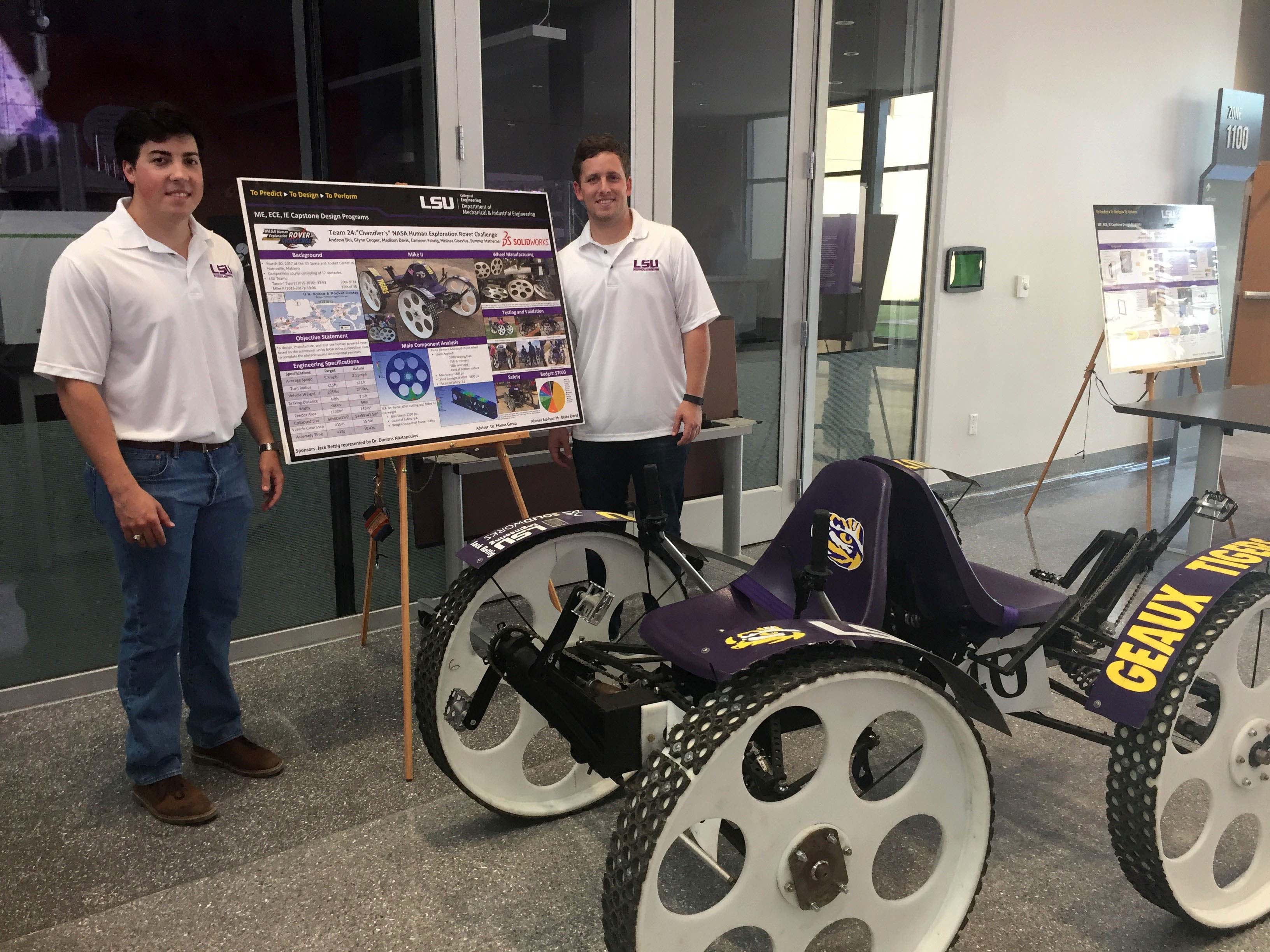LSU Capstone Program Showcases Design Projects from Graduating Seniors
5/5/2017
The LSU Capstone Design Program in Mechanical & Industrial Engineering showcased design projects from graduating seniors on April 28 in Patrick Taylor Hall.
Students from other disciplines such as electrical engineering and computer engineering also participated in the year-long interdisciplinary design projects.
Projects typically originate from industry, nonprofits and private individuals, or from sources internal to the University (e.g. research or educational). Industry projects are highly desirable for their direct relevance to practice and the real world.
Many groups were encouraged to think of creative ways to solve the problem they were tasked with.
For Tyler Parker and his group, figuring out the problem for their project took majority of the fall semester.
Parker said their primary customer Julian, a 22-year-old who was diagnosed with cerebral palsy (CP), a disorder of movement, muscle tone or posture that is caused by damage that occurs to the brain most often before birth.
Julian communicates with this eyes. He has a computer with a camera attached to it that tracks his eyes and uses his eye positioning as a mouse.
In order to make the process more efficient for Julian, the group decided to create an interactive keyboard. Letters that are frequently used in the English language, such as vowels, are positioned in the middle of the keyboard and it builds outwards.
In addition to this, the group also added some smart features to the interface. Julian is able to pick a letter from the screen if the stares at it for a certain amount of time.
Parker said this project tested the group’s knowledge.
“We have two electrical engineers and a computer engineer on our team,” Parker said. “It challenged us to use a lot of problem solving skills you get in school, but applied to a new problem.”
Another project focused on a young girl named Emerson, who also has CP.
Caroline Geiger, Danielle Gonzales and Chase Shaheen built a portable bed for Emerson to sleep on when her family travels.
Geiger said Emerson has uncontrollable movement in her arms and legs, which makes it difficult for her to stay in bed.
Gonzales said having a limited amount of people to help with manufacturing was a problem for them.
“We only had three people and we all needed to be there at one time,” Gonzales said. “We realized we really needed each other for every part of the design.”
On the other hand, Madison Davis and his group had a different kind of challenge.
The team participated in the NASA Human Exploration Rover Challenge in Huntsville, Alabama.
In order to qualify for the obstacle course, Davis said he and his group members had to build a human powered rover. The wheels had to be made from scratch, meaning no commercial items were allowed. The rover also had to fit in a five-foot cube.
Davis said he felt the group was at a disadvantage because nobody had gone to a NASA
Rover Challenge before. 
“We only had information the previous year gave us,” Davis said. “We didn’t have anything that would help us prepare for the competition.”
Nevertheless, Davis felt the project confirmed they made the right choice in majoring in mechanical engineering.
“This is what I enjoy doing,” Davis said. “I love the challenge and I enjoyed fixing the different problems we faced in the design and manufacturing process.”
The Capstone Design program was introduced to the University in 1981-1982 by Professors G.D. Whitehouse and L.R. Daniel of the LSU-ME department.
Students must go through a project selection and assignment process which follows the Capstone Design Fair. They are surveyed and must provide their project preference and essential information for the team building process. Within a week, the projects submitted are reviewed by the Capstone program instructors.
The most outstanding project of the year is honored by the Ben Burns Award, in memory of Ben Burns, Jr. who received his bachelors in mechanical engineering in 1981. Shortly after graduation, Burns lost his life in an industrial accident. His interest and enthusiasm during the Capstone Design class motivated his parents, and many others since then, to fund the award. More than ten ME Capstone Design projects have been awarded U.S. patents over the years.
# # #
Raven Nichols, communications intern, LSU College of Engineering